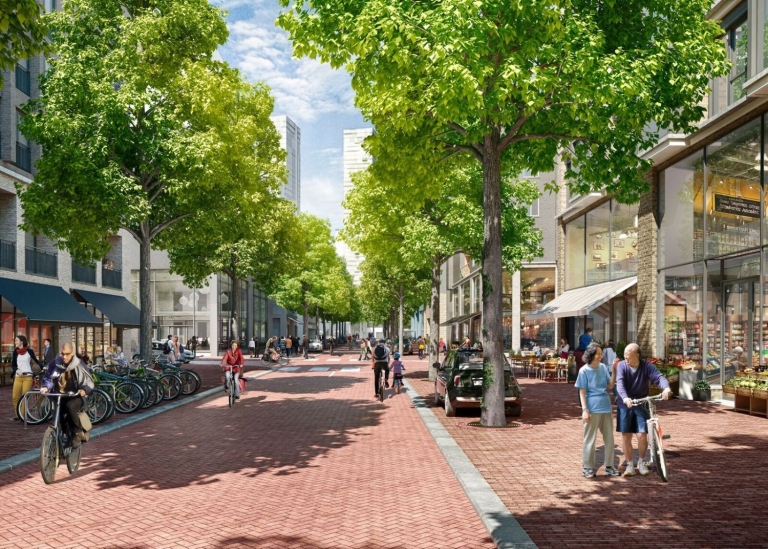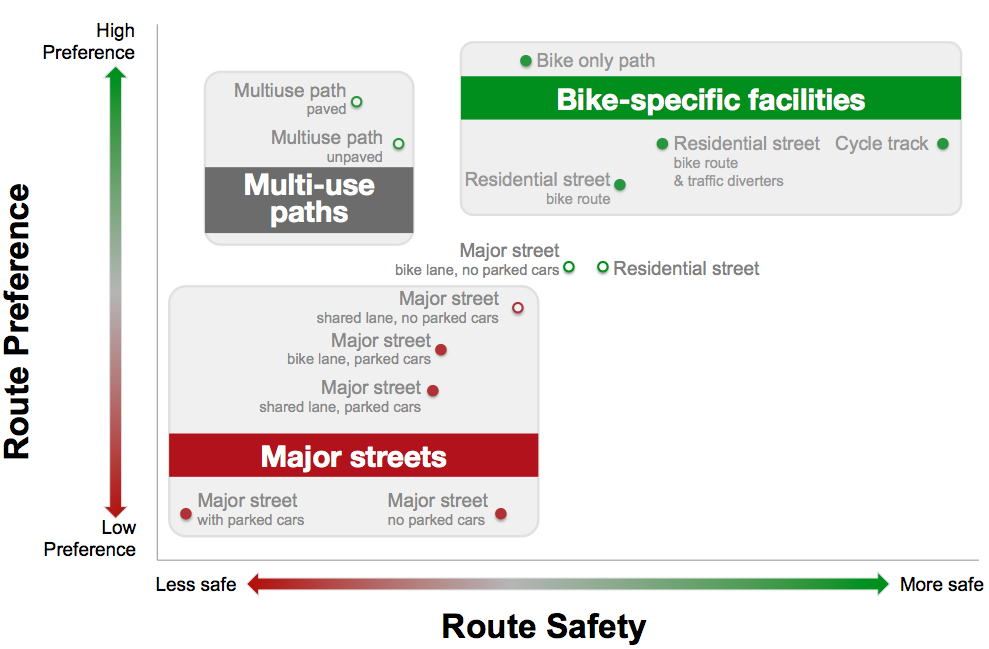|
KozmoNaut posted:Eh, it's no Copenhagen. KozmoNaut posted:And the Netherlands aren't that great, they just have a couple of cities with solidly good bike infrastructure. In the Netherlands the situation is also the opposite of what you say. Most places have great infrastructure as there are national guidelines that are consistently applied. Some larger cities are the exception and have shittier infrastructure such as Amsterdam, the Hague and Rotterdam, as they don't have space to make everything up to specs. Have you ever been to any of the places you are talking about in the last 10 years? Entropist fucked around with this message at 03:05 on Sep 24, 2023 |
|
|
|

|
| # ? May 11, 2024 23:34 |
|
The major right wing party over here is making election promises of increased speed limits and as far as I can tell completely cutting road safety spending. Grim stuff.
|
|
|
|
Carbon dioxide posted:Alright, I'll bite. I just did a 500 km bike ride from the north to the south end of the Netherlands on an commuter bike, and I'd say Arnhem. Arnhem has the worst bike infrastructure. Still better than all of Stockholm. The really life-changing thing about Dutch bike infrastructure is that the arterial routes are pretty much always there. Even if they can't justify a bus to your village, you rarely have to feel unsafe cycling 5 km to the grocery store. It means people living outside city centers are used to choosing bike, and are used to driving around them, unlike here in Sweden.
|
|
|
|
Entropist posted:Copenhagen has terrible bike infrastructure Nah, it's pretty good actually. The cyclists basically own the city.
|
|
|
|
I've been there and it's terrible. Lots of roads don't even have separated bike paths! You have to do that weird "turn right to go left" thing because they don't have protected crossings. The place feels unsafe to cycle with all the cars right next to you. There is barely any "this way to town X" signage for cyclists either. Yeah, you're either trolling hard or you've never been to the Netherlands outside of Amsterdam.
|
|
|
|
There are tons of cycle route signs everywhere though, dunno why you didn't see them. And the hook turn is great, don't diss it.
|
|
|
|
How small does a road need to be to not need separated bicycle lanes?
|
|
|
|
|
nielsm posted:How small does a road need to be to not need separated bicycle lanes? Not necessarily width based, the guidance I have seen is that separation is based on traffic volumes and operating speeds. A low volume low speed road may not need them. This is the New Zealand guidance: https://www.nzta.govt.nz/walking-cy...-intersections/ https://www.nzta.govt.nz/assets/gal...zkwMCw2MDBd.jpg Lobsterpillar fucked around with this message at 00:00 on Sep 25, 2023 |
|
|
|
nielsm posted:How small does a road need to be to not need separated bicycle lanes? Depends on if cars are allowed on it.
|
|
|
|
The Lone Badger posted:Depends on if cars are allowed on it. A separated bike lane without cars is a Shared Use Path
|
|
|
|
Devor posted:A separated bike lane without cars is a Shared Use Path Even when they're originally designed for cars? More cities should implement stuff like this, but permanently. It's way better for everyone on the road except for drivers. https://www.bloomberg.com/news/articles/2020-04-17/how-oakland-made-pedestrian-friendly-slow-streets
|
|
|
|
AreWeDrunkYet posted:Even when they're originally designed for cars? It is better for drivers too, actually. By limiting through-drivers to certain roads designed for going fast, with a very limited number of exits and no direct access to houses of parking lots, and having residential streets all set up as one-way or cul-de-sacs with a lot of traffic slowing measures, you improve the car flow through the entire city and you remove the number of accidents (stroads are "designed" to go fast, are actually slow because of all the turning traffic, and are a prime location for car collisions. Now, those streets in Oakland are still way too wide. These changes don't stick unless you change the street design itself. A design similar to this could work quite nicely for streets like that:   That second one is an artist impression of a redesign they're planning in Amsterdam. Still definitely possible for cars who need to be there to access their properties, but space for lots of greenery to keep the street cool in summer, and for all kinds of non-car traffic.
|
|
|
|
Devor posted:A separated bike lane without cars is a Shared Use Path Nah a separated bike lane without cars is still separation from pedestrians. Shared use paths are something else, and not great in terms of causing accidents.
|
|
|
|
Lead out in cuffs posted:Nah a separated bike lane without cars is still separation from pedestrians. Shared use paths are something else, and not great in terms of causing accidents. 99.99% of any bike alignment that does not have cars running next to it and that isn't a mountain bike trail will be a shared use path because it's not a good use of our time to formally separate the bikes and peds
|
|
|
|
Devor posted:99.99% of any bike alignment that does not have cars running next to it and that isn't a mountain bike trail will be a shared use path because it's not a good use of our time to formally separate the bikes and peds Maybe that’s a local policy decision, but that’s not a separated bike lane. In particular that creates a lot of issues for slow moving pedestrians, people walking dogs, or kids running around, who are having to contend with fast-moving cyclists and e-scooters using it as a through-fare. The rise of electric vehicles is putting a lot of pressure on pedestrian spaces, and it will only continue to build moving into the future. Best practices are to create a separated bike lane alongside roads that are rated for at least 50 kph (30 mph. One term for this is “unbundling”, or intentionally disaggregating road networks in order to reduce conflicts. https://international.fhwa.dot.gov/pubs/pl18004/fhwapl18004.pdf
|
|
|
|
Kaal posted:Maybe that’s a local policy decision, but that’s not a separated bike lane. In particular that creates a lot of issues for slow moving pedestrians, people walking dogs, or kids running around, who are having to contend with fast-moving cyclists and e-scooters using it as a through-fare. The rise of electric vehicles is putting a lot of pressure on pedestrian spaces, and it will only continue to build moving into the future. This was in the context of a separated bike lane and 'what if no cars' so if you're talking about a car road that's not really the scope of what was being discussed Edit: The only use case I can brainstorm is a purely utilitarian bike facility that connects two non-pedestrian destinations and I cannot even imagine what that would be Edit 2: Or 'pedestrians and slow traffic keep right' signs but that's kind of trivially simple and not really the spirit of 'separation' between bikes and peds on a non-car road Devor fucked around with this message at 15:36 on Sep 25, 2023 |
|
|
|
Oh hey bike path chat. I’m still kinda learning best practices and use to meet my master bike path plan but the state just did a pretty comprehensive overhaul of their design guidelines this year. I haven’t had a chance to get through it all but if you want to see how O H I O is handling bike paths and shared use paths etc etc here ya go https://www.transportation.ohio.gov/working/engineering/roadway/manuals-standards/multimodal
|
|
|
|
So here's an example from that DOT planning document I referenced above. In short, they explore the principle of unbundling in the example of retrofitting an urban multi-use path into a separated fast cycle route and a pedestrian walkway. Their goal is to reduce congestion and collisions by improving the bicycle facilities and encouraging commuters to use them:quote:3.4.2 Unbundling bicycle and car networks
|
|
|
|
Devor posted:Edit: The only use case I can brainstorm is a purely utilitarian bike facility that connects two non-pedestrian destinations and I cannot even imagine what that would be Your imagination must be rather limited. Have a few examples.   There's a way for cars to reach the backyard of these houses in case any big loading/unloading needs to be done.    All of these do have a sidewalk as well, but the distances may be quite far for that if you're not planning to go on a long walk. Perfect distance for cycling though. In more rural areas, like the last photo, you have longer bike paths connecting towns for those who cycle to work or school in another town. Often for those they don't bother putting in a sidewalk, to save some costs. But, of course, that means a higher risk of pedestrian/fast cyclist collissions. I cycled about 30 mins each way on a path like that to school starting from age 12. My primary school was closer, only about a 15 min ride. Cycled there on my own since, I don't know, 3rd grade or so?
|
|
|
|
My city tore out an old railroad line and converted it into a bike path. It's wide enough for bidirectional bike travel, but it sucks because without fail, everytime I go there will be idiots walking in the center of the path with airpods in, making them completely oblivious to me and other bikers shouting "On your left!" Similarly, my city upgraded a busy two lane road on the school district boundary line. One side of the street has the poors in the urban public school district, the other side has multi million dollar McMansions in the good, rural public school district. I drive this road to work, most mornings I go no more than 10mph over the limit and just ignore the luxury cars tailgating me. I do this because one day I thought I could appease the BMW gods by speeding up a little more. . . I ended up going 25mph over the limit when I got passed by some douchebag using the bicycle lane as their personal passing lane. There is not a chance I hell I would ever ride a bicycle on this bike lane. Not only are the drivers on this road criminally insane, but the bike path they added is exactly 1 mile long, at both ends it goes back to the old narrow two lane road with steep drop offs.
|
|
|
|
Not Wolverine posted:My city tore out an old railroad line and converted it into a bike path. It's wide enough for bidirectional bike travel, but it sucks because without fail, everytime I go there will be idiots walking in the center of the path with airpods in, making them completely oblivious to me and other bikers shouting "On your left!"
|
|
|
|
Not Wolverine posted:My city tore out an old railroad line and converted it into a bike path. It's wide enough for bidirectional bike travel, but it sucks because without fail, everytime I go there will be idiots walking in the center of the path with airpods in, making them completely oblivious to me and other bikers shouting "On your left!" Ask them to paint a dashed centerline to help solve this issue If they do and it doesn't solve the problem, ask them to put up 'keep right' signs If that doesn't solve the problem, go full Joker mode crying about how we live in a society where no one cares any more Comedy option: air horn (this may be assault, don't take legal advice from the internet)
|
|
|
|
Not Wolverine posted:bikers shouting "On your left!" What? People do that? Bells are a legal requirement where I’m at. Get a big phat one. And when they ignore the bell, pass really really close and smack them lightly on the back of their head. That last part is just customary, not a requirement.
|
|
|
|
Hippie Hedgehog posted:What? People do that? The problem in the US is that a ringing bell just startles a pedestrian, and can cause them to react unpredictably, rather than just moving to the right as they would in a bike-friendly society. There was a case several years back near here where a guy called out 'on your left' to an old non-English-speaking person, and they startled and jumped into his way without looking back. The old person was knocked down and died from a head injury.
|
|
|
|
I hate in-ears. At least with big rear end headphones, you could have the satisfaction of smacking them off their head.
|
|
|
|
idk where you live but around here that's assault
|
|
|
|
I forgot this is the boring answers thread. Sorry.
|
|
|
|
Cars driving in unprotected bike lanes on streets is one thing, but how about cars driving over a bridge in the protected ped/bike path that requires hopping a curb to get into? https://www.youtube.com/watch?v=-CjN8T3quCc
|
|
|
|
Devor posted:Ask them to paint a dashed centerline to help solve this issue Hippie Hedgehog posted:I hate in-ears. At least with big rear end headphones, you could have the satisfaction of smacking them off their head.
|
|
|
|
Devor posted:This was in the context of a separated bike lane and 'what if no cars' so if you're talking about a car road that's not really the scope of what was being discussed Nah, as a few other people have posted, the current best practice is separation. There was even a study here in 2011, which showed that MUPs are some of the most dangerous infrastructure, causing more injuries than almost all other places people can bike, including main roads. Since then, any new separated infrastructure includes cyclist/pedestrian separation, and separation has been steadily retrofitted onto as many MUPs as possible.  https://cyclingincities.spph.ubc.ca/injuries/the-bice-study/ https://injuryprevention.bmj.com/content/17/5/e6.abstract
|
|
|
|
It’s a problem whenever you have two usages with very different speeds. Like there can be a decent amount of bike traffic and also very few bikes from the perspective of the walker.
|
|
|
|
Not Wolverine posted:Maybe a bell might pierce the barrier better but I don't really want to mount a bell on my bike since that would add extra weight and drag this slowing my obese rear end down even more. It's a problem that I could try to solve, but I'm fine with just dealing with it.
|
|
|
|
The air horn idea is growing on me. Morons blocking the entire path is the biggest issue with our otherwise nice greenway
|
|
|
|
Devor posted:Ask them to paint a dashed centerline to help solve this issue And yet there are still people walking shoulder to shoulder across the whole path all the time, and elderly people walking their dogs without leashes (illegally) almost every day. I always use my bell on approach before passing, and quite often people will jump and move erratically, completely unsure about what's going on for a moment. On a bike path. I still count myself absurdly lucky for an American- I only started biking to work in the last year when I discovered a path through the woods that I can walk my bike through that meant I never had to ride on a road with cars. Previously I would have had to go about half a mile on a moderately used road to get to the bike path, and christ that was harrowing. I value my life too much to do that every day.
|
|
|
|
|
Devor posted:The problem in the US is that a ringing bell just startles a pedestrian, and can cause them to react unpredictably, rather than just moving to the right as they would in a bike-friendly society. Seems to me like you're actually making a case for bells with that anecdote. Presumably in that guy's home country, he learned to listen for bells and not random yelling. Seriously though, I thought bells on bikes were a universal thing. I wonder which countries actually use them? It's not such an easy thing to google for. The UK, obviously, because Queen's Bicycle Race has them. The Netherlands and Denmark, because I've heard bells in all those videos explaining how bike infrastructure is Actually A Good Thing. New Jersey seems to mandate "a bell or other audible device that can be heard at least 100 feet away, but not a siren or whistle." Also, Western Australia, according to Wikipedia. Hippie Hedgehog fucked around with this message at 21:59 on Dec 8, 2023 |
|
|
|
The only equipment requirements here have to do with lights and reflectors at night. Keeping right on the greenway IS required, but just ignored
|
|
|
|
|
I think you're required to have a bell on your bicycle here, idk. Mine broke off a few years ago while I was carrying a 24-pack of small bottles of sparkling water an unreasonable distance (it was on sale) and I fixed it by taping it up real good but then it broke off again when I accidentally nailed a removable fence blocking off an inactive roadworks zone while lifting my bike over it and simultaneously slipping through a gap between two fences myself. Haven't had any issues without it though, the last time people were taking up the entire light traffic pathway I simply gave a courtesy cough coming up behind them and they immediately gave way.
|
|
|
|
Over here the provincial traffic laws just require lights after dark. But the city has a bylaw requiring bells. To be honest, I don't know anyone who has actually been fined for not having a bell, but I do know the cops were using bike bylaws to harass homeless people at one point.
|
|
|
|
Hippie Hedgehog posted:New Jersey seems to mandate "a bell or other audible device that can be heard at least 100 feet away, but not a siren or whistle." Air horn it is then 
|
|
|
|

|
| # ? May 11, 2024 23:34 |
|
According to Google, only New York, New Jersey, South Carolina and Georgia require bicycle bells. It's a cultural thing, American's enjoy plowing over pedestrians with their bicycles, it's why fat tire bikes are so popular. But seriously, I don't commute on my bike so I can adjust my schedule or route to avoid pedestrians, and all of the bells available in stores are junk. If I actually was commuting and had to dodge pedestrians for real, I would get a decent bell. Even though I can yell loud a lot of pedestrians don't seem to have a firm grasp of concepts like "left" or "right" which makes sense in a way because if I shout "on your left" and they only hear/make out left they might jump left. smackfu posted:It’s a problem whenever you have two usages with very different speeds. Like there can be a decent amount of bike traffic and also very few bikes from the perspective of the walker. Ironically one of my favorite paths kinda sucks because it is right beside a highway. It's loud as gently caress but there are almost no pedestrians, except mom's with strollers for some strange reason.
|
|
|




































